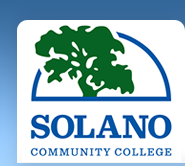SCC Home » Library » LR10
Solano College Library
Course Outline
Catalog Description
An introduction to Information Competency skills necessary to use research tools and select, locate, retrieve, and evaluate information.
Student Performance Objectives
As a result of successful completion of this course a student will be able to demonstrate the basic ability to:
- A) Articulate a research question, problem or issue
- B) Select appropriate information tools to locate and retrieve relevant information
- C) Use appropriate information tools to locate and retrieve relevant information
- D) Critically evaluate information for appropriateness, relevance and accuracy
- E) Recognize the ethical and legal issues surrounding information and information technologies
- F) Demonstrate understanding of academic integrity and honesty
Methods of Evaluating Student Achievement
a. Exercises demonstrating comprehension and critical application of student performance objectives
b. Written annotated bibliography measuring student ability to select, locate, retrieve and evaluate information
c. Quizzes and examinations measuring information competency skills
Student Assignments
a. Required Reading Assignments:
Average 20 pages per week reading lecture materials, assigned readings from books and articles.
b. Required Writing Assignments:
Weekly exercises demonstrating comprehension and critical application of information competency skills (student performance objectives)
c. Other (Terms projects, research papers, portfolios, etc.)
Written annotated bibliography measuring student ability to select, locate, retrieve and evaluate information
Course content Outline
- I. Identify Library and Information Resources
- A. Identify traditional and online Solano Community College Library Services
- B. Recognize appropriate information tools for specific task
- C. Initiate help from a Librarian
- II. Evaluate Information
- A. Differentiate academic information from nonacademic information
- B. Evaluate and judge information for accuracy, currency, and objectivity
- C. Identify primary and secondary sources of information
- D. Match relevance of information to information need
- III. Formulate a research question, problem, or issue
- A. Define and develop working understanding of topic using reference sources
- B. Broaden or narrow or revise topic to fit scope of research
- C. Describe subjects, keywords, and related terms associated with topic
- D. Design a research strategy
- E. Revise research strategy as needed
- IV. Demonstrate understanding of academic integrity and honesty
- A.Recognize and use standard documentation style(s)
- B. Define plagiarism and academic integrity
- C. Construct strategies for avoiding plagiarism
- D. Recognize consequences of plagiarism
- E. Observe copyright guidelines
- V. Select, locate, and retrieve information using print and electronic resources
- A. Develop understanding of field searches and electronic search strategies
- B. Develop effective use of SNAP (Solano, Napa, and Partners) OPAC (Online Public Access Catalog)
- 1. Recognize classification systems and use Library of Congress call numbers.
- 2. Recognize and use Library of Congress subject headings in OPAC
- 3. Demonstrate understanding of classification systems by retrieving local holdings
- 4. Use Interlibrary Loan Services as needed
- C. Develop effective use of print periodicals and electronic periodical databases
- 1. Construct effective search strategies for electronic periodical databases using field searches, keyword searches,Boolean/proximity operators,truncation,and parenthetical nesting
- 2. Recognize need for print periodical collections (including microfilm/fiche)
- 3. Compare academic, professional, and popular periodicals
- 4. Recognize "free" World Wide Web resources and proprietary resources
- 5. Recognize interdisciplinary database and subject database
- 6. Use database features to mark/save/print/email citations and articles
- 7. Identify local periodical holdings and initiate Interlibrary Loan as necessary
- D. Develop effective use of current World Wide Web sources
- 1. Compare current search engines
- 2. Compare current directories
- 3. Compare current information technologies on the web
- 4. Recognize particular need for evaluation of open web information
